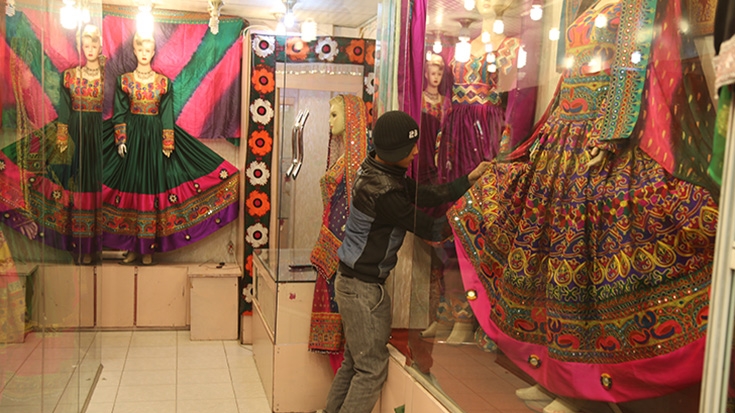Fatima and her husband, live with their family in a mud house in the Dehmazang neighborhood of Kabul City. It is an informal settlement in the city center where poor people live. Fatima works from her house, together with her daughter-in-law and sister-in-law.
Boost to job creation and living standards
Fatima was able to secure the loans through a microfinance institution supported by the Microfinance Investment Support Facility for Afghanistan (MISFA), which has provided a great opportunity for her and thousands of others across Afghanistan to improve their livelihood. The program has received support from the Afghanistan Reconstruction Trust Fund (ARTF) since 2003 and World Bank’s International Development Association (IDA) since 2007.
In November 2013, IDA provided $50 million to the Access to Finance Project, which gives further support to MISFA to increase access to financial services of micro, small, and medium enterprises. To date MISFA has provided, cumulatively, more than $1 billion loans to more than 2.1 million clients, 37 percent of whom are women.
MISFA’s Managing Director, Mr. Bahram says: “An average of 1.85 jobs are created with the issuance of each microfinance loan. This program is also contributing to the economic development of the country. Our clients are people whose living standards are very low, and these microfinance loans have made tremendous contributions in improving their living standards.”
Reza, 21, Fatima’s son and father of the baby, agrees that life has improved. He says that their difficult life was affected by regular crises before his mother’s investment in the sewing and beadwork business. The family had owed people a lot of money, he adds.
“When you go and ask someone to lend you an amount of money for a month or 20 days, first they refuse to lend you the money and even if they do, you will not be able to repay the money back in due time,” Reza points out. “But the microfinance lending program is wonderful, because you receive the money and pay back 5,000 ($87) or 6,000 ($104) Afghanis per month, it does not overwhelm you and you don’t feel the load.”
Significant impact on livelihoods
The impact of the microfinance loans on Fatima’s and her family’s lives is far greater than they anticipated four years ago. Fatima used to produce five to six shirts a day, but now production has spiked to 30 shirts per day, and her income increased from 200 Afghanis ($3.50) per day to 1,000 Afghanis ($17.50). The shirts Fatima sews are sold to a local clothing company, which then supplies to handicraft markets.
Saleh, 18, runs a shop selling these beaded shirts in the Qala-e-Fatullah neighborhood of Kabul City. He says the market for shirts with beadwork is thriving, particularly in spring and summer. The result is that even employees like Saleh reap a good income.
According to Saleh, he sells 7 to 10 shirts with beadwork in the warmer seasons, at prices ranging from 400 Afghanis ($7) to 1,600 Afghanis ($28) each. “I have been working in this business for one and a half years. The owner of the store pays me a salary of $200 a month,” says Sahel, who is the sole provider of his family.
Sixteen-year-old Tabish is also running a shop selling beaded shirts in the same area. He believes providing opportunities for poor women to work on handicrafts will not only help them improve their livelihood, but will also help people such as himself to find a source of good income.
“We have customers, because we sell these shirts, and most of our customers favor handicrafts made by women because they are very delicate,” Tabish observes.

